 After a year on the road, it seems clear to us that if and when we settle down, it will be somewhere in the West.
After a year on the road, it seems clear to us that if and when we settle down, it will be somewhere in the West.
We gave the Midwest and East Coast a chance, and even fell in love with a few places, like Wisconsin, and Vermont. But ultimately, there’s just too many people crammed into the Eastern states. And in the Midwest, the mountains aren’t nearly tall enough for us. Many places we spent time in were beautiful, and quaint, but all along, I couldn’t help but drawing comparisons to my favorite places in the Western states. Nowhere else could measure up.
When we first hit the road, I didn’t want to consider Colorado as a future home, because I knew I would love it, but that real estate is expensive, and there were better deals to be had throughout the rest of the country.
But, the old adage “You get what you pay for” is so true. While you can get 100 acres with a home for less than $200k in the Midwest . . . it’s the Midwest. The people are the nicest, but the land is flat, the area is homogeneous, and the scenery just can’t compare to the kind of western mountain landscapes that take your breath away.
With this in mind, I’m willing to admit that I love the familiarity of the west, and would consider buying something in these parts. For now, here’s a list of places we want to investigate in depth.
A Short List of Our Favorite Western Places to Live, Work, Dream:
Salida, Buena Vista and the Arkansas River Valley, Colorado
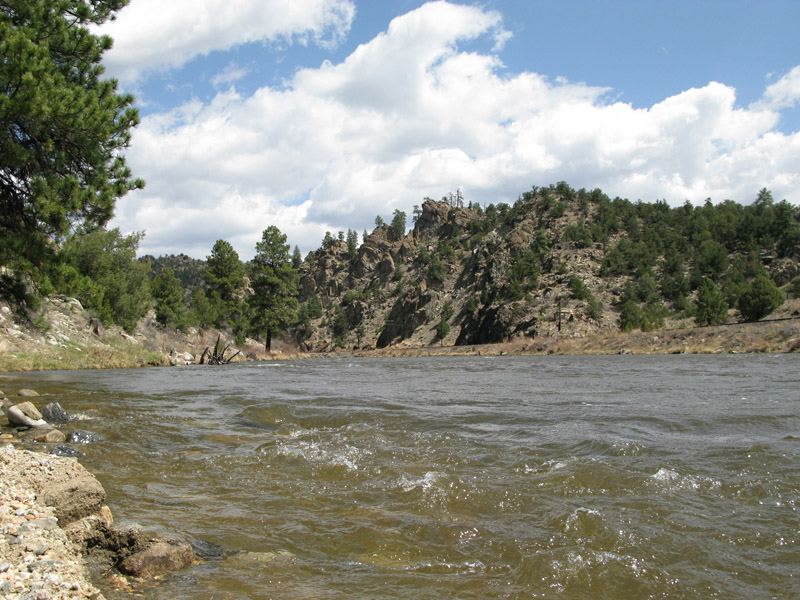 I first heard of this area years ago, when I had my hiking boots repaired at Salida-based Rocky Mountain Resole. When I asked a person there what Salida was like, she said “It’s an awesome place to live, the weather is perfect, and it’s still affordable. But don’t tell anyone!”
I first heard of this area years ago, when I had my hiking boots repaired at Salida-based Rocky Mountain Resole. When I asked a person there what Salida was like, she said “It’s an awesome place to live, the weather is perfect, and it’s still affordable. But don’t tell anyone!”
Too late. This “banana belt” area of Colorado has been discovered.
The Pros:
- Surrounded by 14,000′ mountains and the great Arkansas River, the scenery is breathtaking.
- Located on the Eastern Slope of the Rockies, and just 144 miles from Denver, the Arkansas River Valley also sees much milder, warmer weather than the rest of the state.
- Both Salida and Buena Vista have cute, walkable downtowns, with lots of character.
- There’s thriving year round tourism, and if we wanted to make a living this way, we probably could.
The Cons:
- Real estate is expensive.
- Both towns are really small, and it could be tough as newcomers.
- If we tell them we’re from California, they might shoot us.
- Limited shopping
- Small economies in both towns could make it hard to start a new business.
Silverton, Lake City, or Creede, Colorado
- When you think of Colorado, this is it. The Western Front mountains here make California’s Sierras look like foothills. They are huuuuuuge! Trees are massive, rivers and lakes are everywhere.
- Development isn’t quite as rampant as in other areas. There are still good deals to be had on smaller pieces of land.
- These historic mining towns have a thriving summertime tourism industry, which would be great if we decided to open an RV park or hiking lodge.
The Cons:
- Winter . . . we’re talking over 120″ of snow, more than most of Colorado.
- Avalanches and road closures. This area has more earth movement than any other.
- It’s extremely isolated. Silverton and Lake City have less than 1000 people each who are brave enough to live in these towns year round.
- Transportation costs are high. Each town is about one hour from a medium sized shopping area.
- Complicated water rights issues
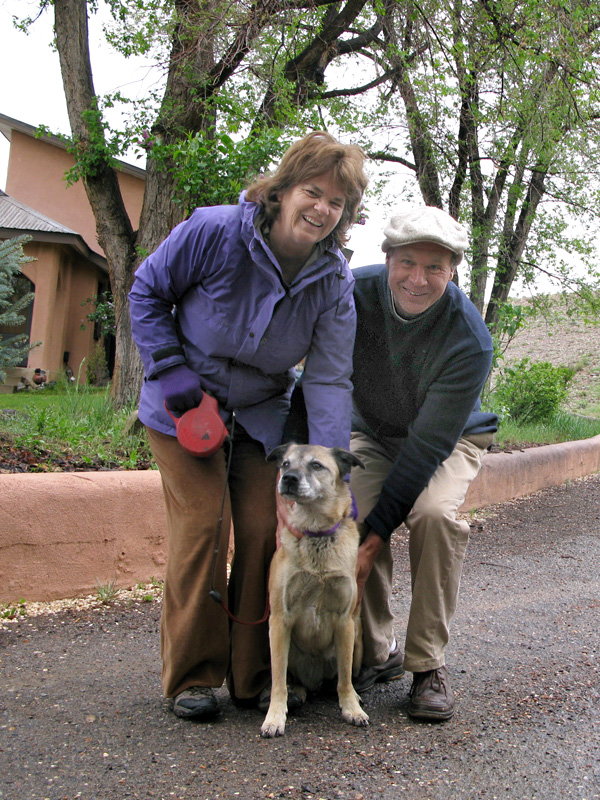 If we had the money and wanted more of an in-town living experience, this is where we would live in a heartbeat. Here’s what we loved and didn’t love about it.
If we had the money and wanted more of an in-town living experience, this is where we would live in a heartbeat. Here’s what we loved and didn’t love about it.
The Pros
- Set at 6500′ near the Four Corners area, the town lies alongside the Animas River, in a lush valley at the foot of the San Juan Mountains. There’s mountains to the north, and desert to the south. You couldn’t ask for a more scenic place to live, with year round things to do.
- With a population of about 15,000 in the town itself, and 45k in the outlying areas, Durango is still small enough to have a real sense of community. Old timers say they don’t know everyone like they used to, and they think the town has grown too much. But judging by the amount of community events on the calendar, I think it just takes a little more work to know your neighbors, that’s all.
- I felt a real kinship with the locals that we spent time with. Call them New Agey or just plain hippies, but they were all really nice people we enjoyed meeting.
- Summers are warm, and winters are relatively mild compared to the rest of Colorado.
- There are loads of public recreation amenities, and Fort Lewis College provideas a progressive university attitude.
- There’s a great biking and walking path alongside the Animas River that takes you from outlying neighborhoods right into a thriving downtown.
- The world famous Durango & Silverton Narrow Gauge Railroad is based there, and take tourists back and forth several times a day. A thriving tourism industry is the basis of their economy.
The Cons.
It’s hard to find anything not to like about Durango, but here’s a couple.
- There’s rampant development going on outside of city limits. From cookie cutter homes, to obscene mansions perched on the sandstone cliffs, to shopping centers.
- Real estate is expensive. You’d never know there was a crash happening elsewhere, because prices here are still high. A tiny, decrepit 900 sq. ft. home on a medium sized lot was going for $325k. Our friends, Dru and Michael, have a house (pictured above), set on 2 acres, that she bought for just $75k just 25 years ago, and is now going for over $500k.
- We probably couldn’t afford to buy here, but maybe in the neighboring towns that share some of Durango’s characteristics, like Mancos or Bayfield.
- Complicated water rights issues.
Pagosa Springs, Colorado
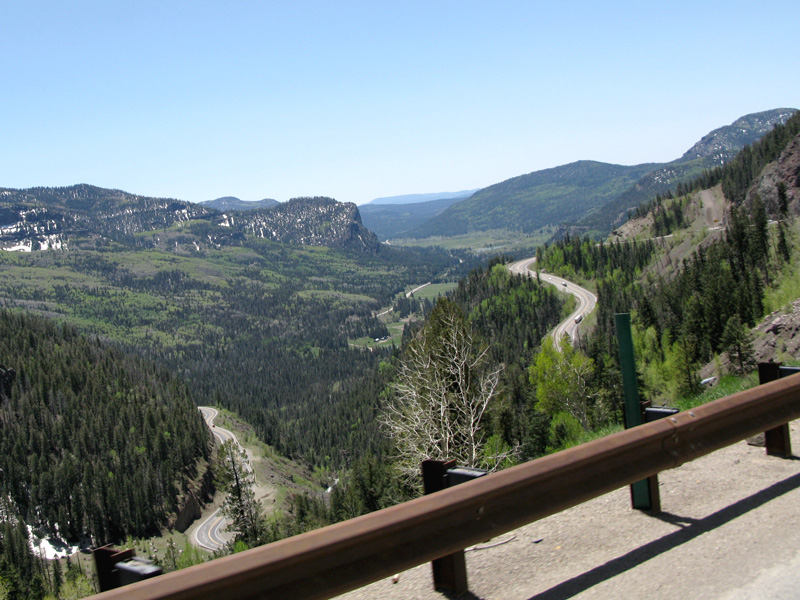 About an hour east of Durango and just 35 miles north of New Mexico, lies Pagosa Springs, a quiet town known for it’s gorgeous hot springs pools along the San Juan River.
About an hour east of Durango and just 35 miles north of New Mexico, lies Pagosa Springs, a quiet town known for it’s gorgeous hot springs pools along the San Juan River.
The Pros:
- Like all of Southwestern Colorado, the scenery here is spectacular. The mountainous terrain offers year round outdoors opportunities.
- Development isn’t as rampant as in other areas of Colorado. Relatively good real estate prices can be found here.
- Pagosa has hot springs galore and an historic downtown, resulting in a hearty summertime tourism business.
- With a population of under 1600k in town, and 12k in the county, the town is small enough to know your neighbors. While there aren’t any big box stores like Home Cheapo or MallWart to keep the cost of living down, the town does have a real grocery store and some decent looking independent home stores to keep you well supplied in-between runs to bigger places like Alamosa or Durango.
- Our friend Stacey moved there from L.A. so she could have her dream house on 5 acres, with horses (she has it for sale now). Some of the things she loves about Pagosa include “plenty of National Forest, quiet, space to roam, friendly people, clean, no graffiti, no loud music in cars, lots of animal people, no traffic, low lighting so you can see tons of stars, clean air, great temps most of the year (must be a non-tropical person), beautiful wildlife, quality family life, great church community.”
The Cons: Stacy says that:
- There’s no night life
- No mainstream shopping
- No dating scene for singles
- There’s a short growing season for plants/gardens.
- There are no vets on the weekends
- Not enough restaurant variety
- It’s expensive
- Wintertime is extremely isolating.
And like many rural areas, don’t move there and expect to find a job. The locals have a saying; in wintertime, there’s only one dollar in town, and it gets passed around from business to business. In the summertime, there’s two dollars.
Pie Town, New Mexico
What? You say you’ve never heard of Pie Town? Well, neither had we, but how could we pass up an opportunity to visit a place with a name like that? If you’re looking for the authentic “wild west,” Pie Town is it.
The Pros:
- Located on Highway 60, 160 miles and about two hours south west of Albuquerque, Pie Town isn’t much more than a wide spot in the road, just past the Very Large Array. Travelers drive this route as a slower way to get to Phoenix
- Continental Divide hikers will stop in town for some rest and a slice.
- It’s located at 8,000′ above sea level in a juniper and pinion pine forest, on the Continental Divide.
- The owner of the Pie-O-Neer told us that the town desperately needs a real youth hostel, so she can cut back on the number of smelly hikers she allows to clean up at her home. We got excited when we heard about this need, because it’s something we had talked about doing long ago.
- Land in Pie Town / Catron County is scenic, really affordable, and with mild winters and warm summers, it’s an ideal place to start a small hobby farm too.
- Yes, there is great pie in Pie Town.
The Cons:
- Pie Town might be too small, and too isolated to get any kind of locally-based business off the ground. There are no stores or supplies, so everything must get trucked in.
- Infrastructure seems precarious (the day we were there, the town’s water supply was broken for the whole day).
- It’s really the town that time forgot, and seems like living there would be hard, a little too much of pulling yourself up by your bootstraps.
Anywhere between Taos and Tres Piedras, New Mexico
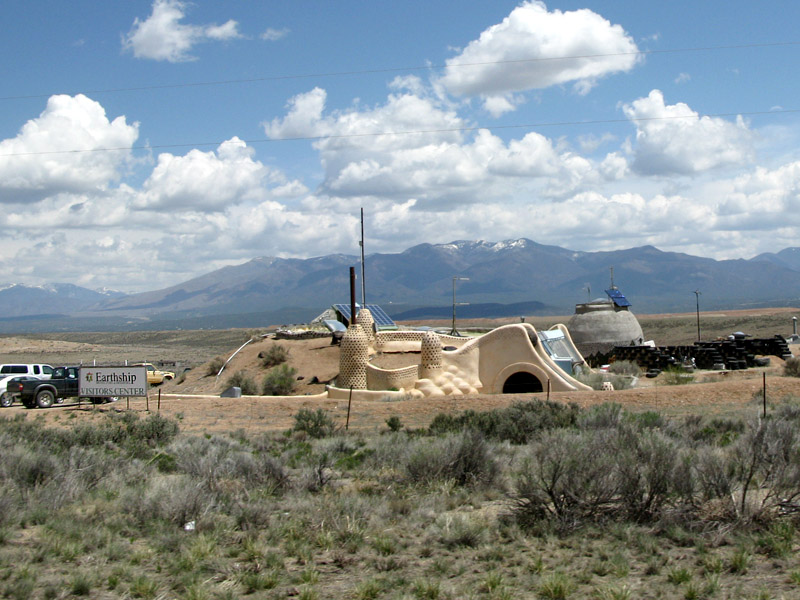 As long as we’re talking about beautiful but isolated areas, we might as well throw in these two areas. Along Highway 64 between Taos and Tres Piedras, this area is filled with Earthship homes dotting the landscape, and low impact eco-living is the norm.
As long as we’re talking about beautiful but isolated areas, we might as well throw in these two areas. Along Highway 64 between Taos and Tres Piedras, this area is filled with Earthship homes dotting the landscape, and low impact eco-living is the norm.
The Pros:
- There are lots of super progressive earthy types who have bought land here, and are following the principles of earthship living to prepare themselves for the day that peak oil hits this country hard.
- Although it’s all countryside and lacking any kind of town center, it does seem like the place you want to be when oil runs out and neighbors need to depend on one another. People here know a lot about living off grid.
- Off-grid land in this area is relatively affordable.
The Cons:
- Extreme isolation
- High desert climate
- No services for 70 miles in each direction
- High winds and no mountains.
- Also, we couldn’t tell how many of those earthship owners actually live in their homes year round, or just have them as showpieces while they go off to ski in Telluride.
Austin / Luckenbach / The Hill Country of Texas
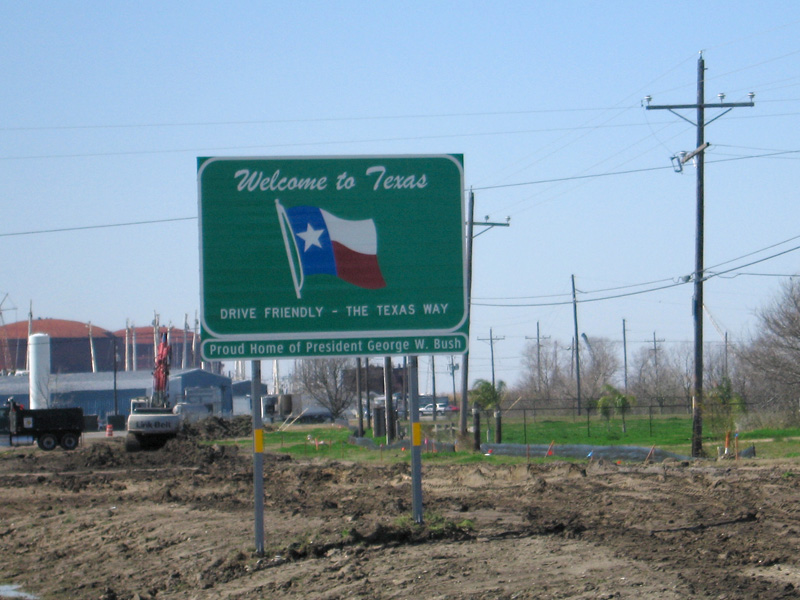 Jim thought would hate Texas. Id been to Austin before, and knew he would find something redeeming in the Lone Star State. Sure enough, he loved Austin’s big city amenities, and was smitten by the Hill Country.
Jim thought would hate Texas. Id been to Austin before, and knew he would find something redeeming in the Lone Star State. Sure enough, he loved Austin’s big city amenities, and was smitten by the Hill Country.
Last time I was in Austin, it was 1994. I knew the city had grown, and was prepared to be disappointed, fourteen years later. Was I wrong.
The Pros:
- While Austin has indeed grown and is teetering on the brink of too many upscale condos and shee shee boutique stores, it still has the funky, laid back flavor that it always has.
- Austin has everything a city could ask for, without a lot of the nasty aspects associated with urban dwelling.
- The Texas Hill Country is a great escape from the cities; it’s pretty, has lovely scenery, an arts scene, and a small town feeling.
- Great music is everywhere.
The Cons:
- We wouldn’t live in Austin unless some great opportunity came our way, like one workamping job we saw right on the outskirts of town, or if we wanted to sell out and get back into tech.
- It takes a lot of money to have fun in Austin. We would end up working just as hard as we did in the Bay Area, just to have fun on the weekends.
- Rich city dwellers are buying up Hill Country property, making most good land there unaffordable.
Abbeville, Louisana
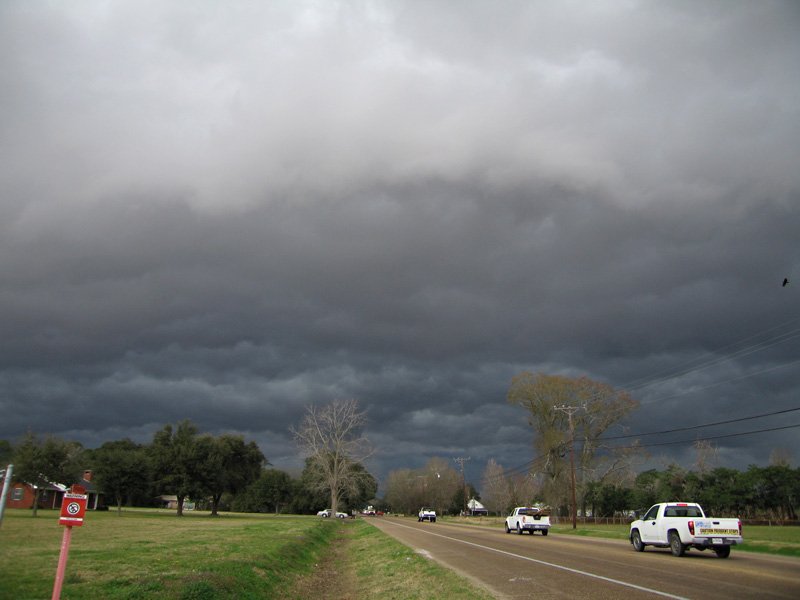 After being in the East for so long, western Louisiana’s open spaces, farmland and wide open spaces were refreshing. Back in February, we traveled along Route 82 through Cajun Country, and spent a couple of nights in Abbeville, just south of Lafayette and 150 miles south west of New Orleans. With a population of about 12,000, it’s not too big, and it’s close enough to the University in Lafayette to get a dose of city living.
After being in the East for so long, western Louisiana’s open spaces, farmland and wide open spaces were refreshing. Back in February, we traveled along Route 82 through Cajun Country, and spent a couple of nights in Abbeville, just south of Lafayette and 150 miles south west of New Orleans. With a population of about 12,000, it’s not too big, and it’s close enough to the University in Lafayette to get a dose of city living.
Our host, Joe Teche made us feel right at home, and if his Cajun hospitality was any indication of how people treated one another there, it was easy to see us living there. That is, until the tornado warnings hit. Then we heard about the stifling summers. And then I realized, we aren’t Cajun, or related to anyone there. Chances are, we’d never fit in. But I’m still keeping it on my list, because this is a really nice part of the state, and good deals on land can be found there. We might go back in the fall to visit.
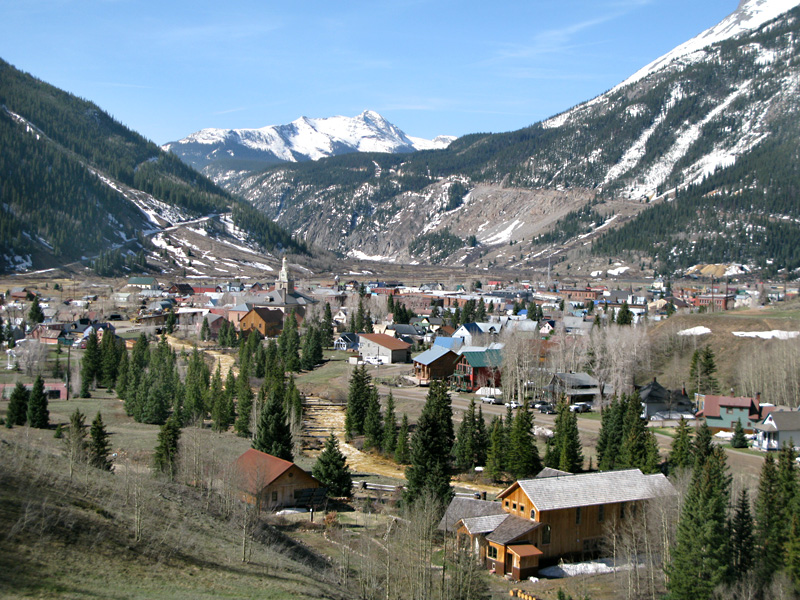
Hi! I loved reading about your travels. My husband and I just spent a couple weeks traveling from CA to MN to bury my Mom and continued south and back to CA.
We are nearing retirement, can’t afford to live in CA then, and looking for somewhere ‘new’. I love the outdoors….but, not snow, high humidity or mosquitos! I am a homesteader at heart. I would love to have small acreage for animals, gardening and a wood shop with small town living. For these reasons I also feel the West is best for us. If you have any suggestions other than what you posted (I am going to do more research on many of them) I would love your advise!
Happy hunting!
Karen it’s nice to hear from you, thank you for writing. I’m so sorry about your mom. Perhaps it was her energy nudging you toward this shift, so a blessing among the grief I guess.
California is crazy expensive, we hear you on that. We are big fans of the west and can relate to your dreams of what you want for a property. I hate to break it to you but no place is perfect as far as the factors you listed, at least to us. We love the arid west, but it snows in winter in most of it and is hotter ‘n hell in summer. We love the mountains, but again, you’ve got snow and huge fire dangers. We love the Hill Country of Texas, but it’s got humidity most of the year, and tornadoes. This is why we decided to just move with the seasons. Of course we’ve had to sacrifice our love of gardening and having a workshop but to us it’s worth it.
There’s just no place that’s perfect, but if you can accept that no matter where you go you’ll have to give up something, then you may find East of the Cascades, Northeastern CA, or heck even Western Montana may be to your liking most of the year. Colorado is of course our all time favorite, almost anywhere in the state is terrific.
Good luck, let us know what you decide on!
Becca…yes, we are from Humboldt County, land of the drive-thru trees. I agree, the scenery is stunning. But the reason it’s so stunning is that it’s wet, grey cold and foggy there on the coast, for most of the year. Living under the clouds all year drove me nuts, I have to find somewhere with a real summer. Jim could take it or leave it, but since he would have to hear my continued complaining all year long if we stayed in Humboldt, he would prefer that we live somewhere with weather we both like.
Just reading this now–Aren’t you from Redwood territory? Stay there! Prettiest part of the country, if you ask me (I’m from NYC).
Great to read. Love reading different peoples perspectives on small mountain towns. Did you go through Montana, Idaho, Oregon and Washington? I moved away from the east coast 12 years ago and have been back quite a bit this year due to family. I went up to Vermont to reacquaint myself and to see if I could ever live there. I think it would be hard for anyone after living west for a long period of time. I did love the Mad River Valley though. great area and close enough to Burlington for a city fix. I have lived in the Jackson Hole area for quite a while and love the Victor/Driggs area. McCall, Idaho is another one to check out too! It takes some compromising wherever you choose and everyone’s choice of paradise is unique to themselves … beautiful, small town, real community with endless outdoor recreational opportunities works for me …
Hey Hitek, I was hoping nobody would notice we didn’t have pics of Pie Town. Our old camera died that day. It was a bummer, man.
I think you’ll LOVE the West. Yep, there are places where the only vegetation is a tumbleweed, but it’s not all like that. Just wait!
But yes, the growing season in the northern states is really short. being from California, I took year round fresh produce for granted. Didn’t realize that once you get out of Cali, all of that is a real luxury come winter.
As for the Pacific Northwest, it’s a beautiful, solitary place, but one that I got tired of living in because of the constant drizzle and overcast days.
The Appalachians are definitely pretty, in their own way, and much much different than the western mountains.
We could give the East a chance, if something great came along. Jim’s sister is in upstate New York, and we absolutely loved Vermont. But it would have to be something really spectacular to get us there.
We aren’t planning on stopping anytime soon, just keeping our options open in case we run into the “perfect” place we want to stop. So far we’re planning on being on the road until at least next summer of ’09, doing workamping here and there to support it.
Thanks for asking!
No pictures of Pie Town? Haven’t they invented photography there yet?
Thanks for the excellent article on the areas out west. I really want to get out there. I have spent all of my life on the east coast except for a few trips out west with the folks in the motor home during my youth. There’s a lot to see and tons of beautiful landscapes. We are heading out there next summer.
I don’t think I could ever live there, though. I imagine it being mostly void of trees, water, and grasses. I know it isn’t all that way, but that’s just the image that come to mind. I know that places like Wyoming aren’t that way, but they are so cold (I am from Florida) and the growing season is so short. I am hoping that Colorado and Oregon will change my perspective of the West. From what I have heard and seen, I wont ever want to leave the Pacific Northwest once I get there.
I think you should give the East coast another chance. Its not as crowded as you might think. There are plenty of wide open spaces here. Its just that none of them are on the coast. The coast is completely inhabited. Next time you are in Florida, try driving 441. However, depending on your perspective, it might be a little depressing.
As far as I am concerned (so far), the Appalachians are about as pretty as it gets. I still have a lot to see though, and they are ant hills compared to the Rockies.
Best of luck on finding “The Place” for you guys. Does this mean that you are already planning on getting off the road?!
Oooooh, nice area, Henry. I’m jealous! Ok, if you hear of anything good at a decent price, you know who to contact.
We live in Camp Connell on highway 4 about 8 miles east of Arnold. We do get the 4 seasons. Not that cold in winter but as we are at 5,000 foot elevation we can get a lot of snow. Housing prices in our area and most of Ca have been dropping like a rock.
Thanks Susan! Yeah, we’re interested in Colorado, but we would go back to Humboldt in a heartbeat if we could afford the kind of land that we want. I looked at the link to the Inn (know exactly where it’s at), and I think they are smoking CRACK to ask that much money, for a location that is hard to get to, not to mention what gas will cost to get there.
Every time I check out real estate in Humboldt, I am discouraged at the prices that I see.
It looks like you’re really interested in Colorado, but I just found this on the Humboldt County Craigslist. It’s for sale and looks pretty nice, so I thought I’d send the link. Sure be nice and warm in the summer.
http://www.klamathriverresortinn.com/
Hey Henry, don’t get me wrong, I do love the Sierras, a lot. What town do you live in? I have a crazy aunt that lives in Markleeville too. I’m jealous of your location, as we would love to live there but can’t afford the real estate.
The Sierras are indeed spectacular, and just as beautiful. Trees are bigger there too. We just got used to seeing the toothpicks that pass as trees in the rest of country!
Still though, the mountains in Colorado, in my opinion, just seem more dramatic to me, I don’t know why. Maybe a visit to CA is in order so we can remember what we left behind last year.
Now I have to take exception to your comment on the Beautiful Sierra Nevada Mountains of California. They are our home. It is true they are a little smaller only about 9,000 to 12,000 feet high but they can be just as beautiful. We just got back form a day trip to Markleeville in Alpine County and the view from the eastern side of the Sierras is wonderful. They still had a cap of snow on them on June 19th.
We also have down the road about two miles from our place Big Trees State Park and as you know these monster redwoods would make the trees in the Rockies look like tooth picks!
I enjoy reading you review of towns. My brother lives in Louisiana and what you say is true it is cheep but the weather can be awful in the summer but the fall and spring are nice. We will only visit him in the early spring or fall.
“…too many people crammed into the Eastern states. And in the Midwest, the mountains aren’t nearly tall enough…”
Yes, but how can one survive without the ocean nearby?
Hey Rhodester, we could be knocking on your door in wintertime, so lookout!
**sniff** Feeling left out here, but I guess I don’t blame you. It’s currently 92 degrees at one in the morning.
Will do Rene!
Wow, nice break down of the list.
Jeremy and I loved a town in Colorado, called Georgetown about 50 minutes into the mountains from Denver. We did not look into the real estate there, but it is cute little town that everyone knows everyone. We love going to Loveland Pass to snowboard during winter, and there’s lots of mountain biking ops during summer.
Another town we love is Moab, Utah~ Our dream town so far. Between the national parks, mountain biking trails and lots of great restaurants. We are set here.
Who knows what other town we might fall in love with after we start full time and get on the road. I am assuming some towns in Oregon will catch our eye too.
But so far, these two towns are our favs. (^_^)
Whew, glad it wasn’t just me.
Hey when you get out there, keep us posted on your thoughts about the area, we are very curious.
We thought it was too until we timed it – 12 miles, 10 minutes. It is so much closer than even we thought, and it feels like another planet!
Thanks for the clarification, David, it did seem like the earthship area was waaaaaay out there, but it’s not that far really. I have a tendency to exaggerate distances, since I’m so bad at judging them!
I can definitely imagine life off the grid.
AKC, how can I a job like Lichtner’s? Wow!
Plenty of services within 70 miles of Taos and Tres Piedras – The earthships are only 10 minutes from the center of town, but yea, once you are out there you are definitely “outside” of town with nothing to walk to. But imagine life off the grid not paying for any utilities. You could spend a lot more on your trips then and go anywhere! 🙂
Great post Rene.
Glad to hear you will at least be on this side of the continental divide!
Did you ever hear of this guy? He hiked the PCT CDT and the ECT in one year!
http://www.justinlichter.com/pasttrips.html
//A